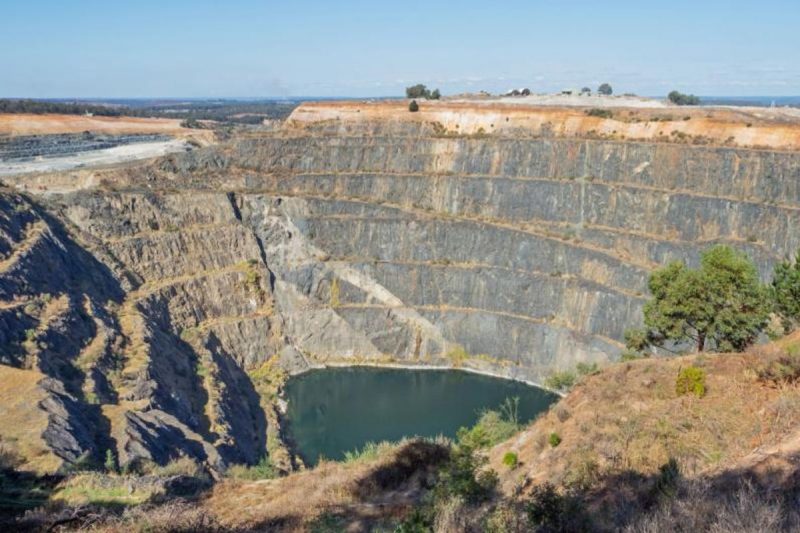As lithium demand continues to rise, it’s useful for investors to gain an understanding of the different lithium deposit types at play.
Lithium is mined from three different deposit types: lithium brine deposits, pegmatite lithium deposits and sedimentary lithium deposits. Each comes with different project requirements, extraction methods and processing times.
Brine deposits, for example, are the most common, accounting for more than half of the world’s lithium resources, but may require longer processing periods. The majority of global lithium production comes from continental lithium brine deposits.
The best example of a continental lithium brine deposit is the 3,000 square kilometer Salar de Atacama in Chile, home to one of the world’s richest deposits of high-grade lithium. You can read more about this deposit type by clicking here.
Pegmatite lithium deposits and sedimentary lithium deposits are also important to know about, and the article below outlines their key characteristics. Scroll on to learn more about their importance today.
What are pegmatite lithium deposits?
Pegmatite is a coarse-grained intrusive igneous rock formed from crystallized magma below the Earth’s crust. Pegmatite lithium deposits, also known as hard-rock lithium deposits, can contain extractable amounts of a number of elements, including lithium, tin, tantalum and niobium.
Lithium in pegmatites is most commonly found in the mineral spodumene, but also may be present in other minerals such as petalite, lepidolite, amblygonite and eucryptite.
Australia, the US, Canada, Ireland, Finland and the Democratic Republic of Congo are known to host pegmatite lithium deposits. The top-producing spodumene pegmatite operation, known as the Greenbushes mine, is located in Australia, and it is owned by Talison Lithium. Talison is controlled 51 percent by China’s Tianqi Lithium (SZSE:002466) and 49 percent by Albemarle (NYSE:ALB).
Also in Australia is the Mount Cattlin spodumene mine, an open-pit mine that rests on a flat-lying pegmatite orebody. Mount Cattlin was originally developed by Galaxy Resources, which merged with Argentina-based miner Orocobre in August 2021 to form a multinational mining corporation rebranded as Allkem (ASX:AKE,OTC Pink:OROCF).
In addition, Allkem holds the James Bay lithium pegmatite project in Quebec. As of December 2021, its mineral reserves were estimated at 37.2 million metric tons with an average grade of 1.3 percent lithium oxide.
Hard-rock ore containing lithium is extracted at open-pit or underground mines using conventional mining techniques. The ore is then processed and concentrated using a variety of methods prior to direct use or further processing into lithium compounds.
Extracting pegmatite lithium from hard-rock ore is expensive, meaning that such deposits are arguably at a disadvantage compared to brine deposits. However, pegmatite lithium deposits have considerably higher lithium concentrations than brines, so deposits with extremely high lithium values may still be economically viable. The production of other metals, such as tin and tantalum, can also help offset costs.
It is worth noting that hard-rock deposits are not subject to the sometimes 12 month long processing times currently seen at some brine deposits.
What are sedimentary lithium deposits?
Sedimentary rock deposits account for about 8 percent of known global lithium resources, and are found in clay deposits and lacustrine evaporites.
In clay deposits, lithium is found in a mineral group called smectites. The most common type of smectite is hectorite, which is rich in both magnesium and lithium. It gets its name from a deposit containing 0.7 percent lithium found in Hector, California.
Many companies are in the research and development phases for their clay deposits, but no companies currently produce lithium from them.
The most commonly known form of lithium-containing lacustrine deposit is found in the Jadar Valley in Serbia, for which the lithium- and boron-bearing mineral jadarite is named.
The Jadar deposit, owned by Rio Tinto (NYSE:RIO,LSE:RIO,ASX:RIO), reportedly contains more than 200 million metric tons of lithium. The company claims it is one of the largest lithium deposits worldwide, and the project is currently in the prefeasibility stage. While Rio Tinto had committed US$2.4 billion to developing the asset, the Serbian government denied its permit in late 2021 following significant citizen protests.
Securities Disclosure: I, Melissa Pistilli, hold no direct investment interest in any company or commodity mentioned in this article.





























